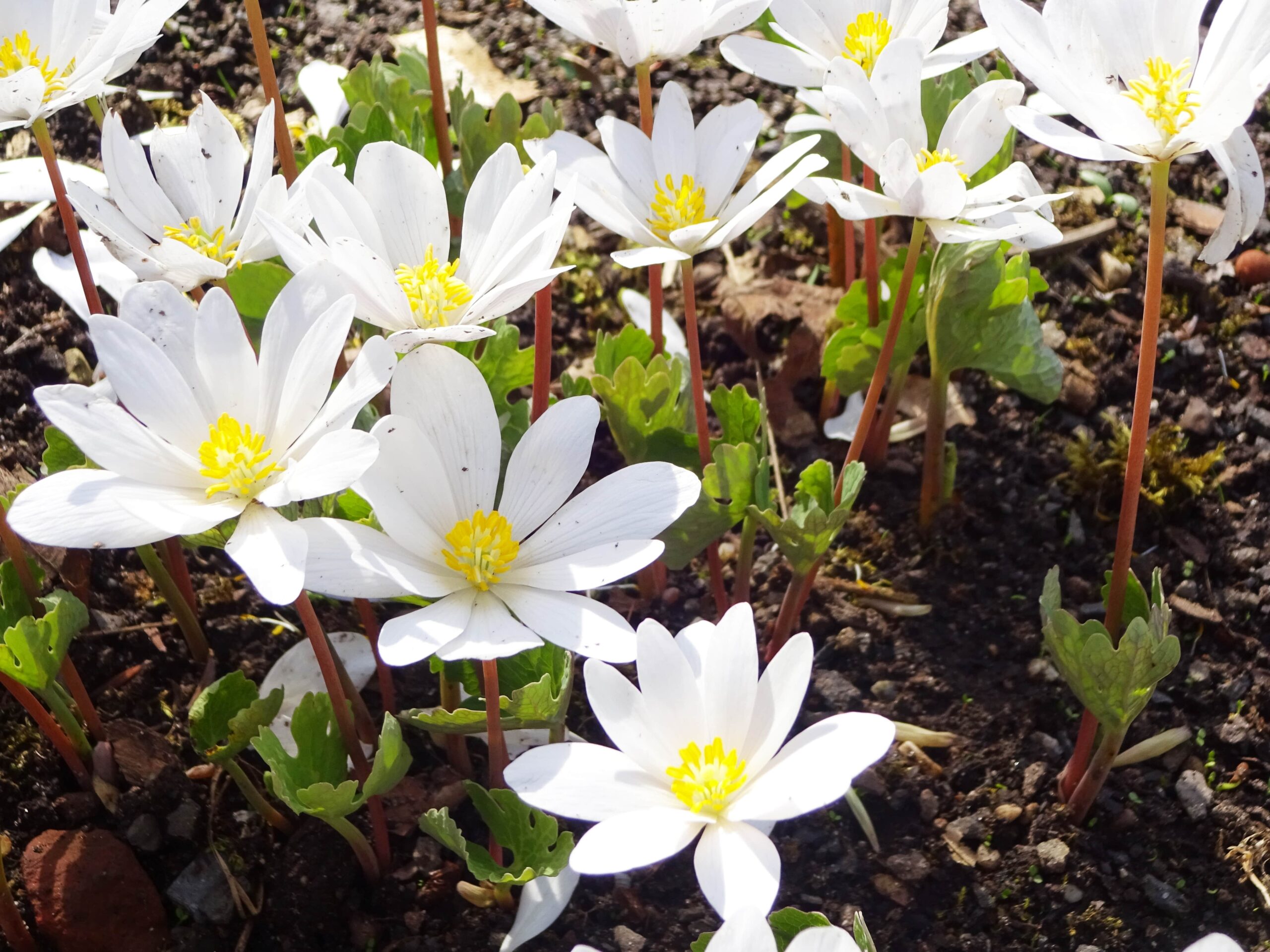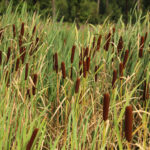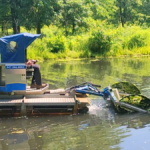Spring is a busy time of year. Actions taken now will help your natural area look great throughout the summer and fall while improving its ecological value for the sake of Mother Nature!
PRESCRIBED BURNS
Most native plantings need to be burned, an adaption from pre-settlement times when fire in nature was common. Burning stimulates growth of desirable native plants while discouraging invasion by non-native plant species that are not adapted to survive fire. Promoting a diversity of native plants using prescribed fire makes the land healthier for the wildlife species that depend on them and so burns are good for both plants and animals! And don’t worry about the creatures; most wildlife is able to leave an area before it burns or are able to retreat underground as the fire passes. Prescribed burns require special permits and so you need to plan ahead.
MORE SEED PLEASE!
Nature makes it look simple and beautiful, but growing native plant communities from seed takes more than just throwing it out there. Seeding a new natural area or overseeding a space that has lost its native diversity takes some thought as not all native seeds act alike. Many native seeds require 60, 90 or 120 days of cold, moist conditions (stratification) to break dormancy and grow. These seeds should be planted in the fall and will germinate when the conditions are right for them. If you didn’t plant native seeds last fall, do not be discouraged, as there are several native species that do not require any special conditioning at all to germinate. Knowing which seeds to sow in the spring is the first step to a successful planting project (hint: we can help with that).
RESTORE YOUR SHORELINE
Shoreline erosion is evident when you see soil falling from the edge of your lake or pond and into the water. This leads to sediment building up in your waterbody in addition to the nutrients in the soil feeding unwanted algae and aquatic plants. Depending on if you need a permit, restoring your shoreline can start in the spring. The easiest shoreline restoration project involves replacing lawn with native plant plugs. Just kill off the grass using aquatic-safe herbicide and plant the plugs right into the dead grass in a few weeks. You can use seed as a more cost-effective solution but remember only certain plants species will germinate in the spring. Be sure to cover the seed with an erosion control blanket to keep the seed from washing away.
CONTROL YOUR GOOSE POPULATION
ILM begins goose addling, also called egg oiling, the week of April 1st and goes through the middle of May. Egg oiling limits the goose population by humanely preventing goose eggs from developing into goslings. Each gosling imprints on the lake where they were born, returning year after year to nest. So over their 8-year average lifespan, with each female laying 6 – 8 eggs per year, one pair of geese could increase the population by roughly 50 geese. Population control is strongly encouraged. IDNR permits are required for both the site and the person oiling the eggs. These permits take about a month to receive.
INSTALL FOUNTAINS
Is your ice disappearing? Then it is time to have your fountains reinstalled. Fountains must be pulled from the water every fall to avoid being damaged by freezing conditions and so must be reinstalled the spring. If you don’t have a fountain one can be installed at any time. But you will reap maximize benefits of moving water using a fountain by starting early!
ROUTINE MAINTENANCE ON DIFFUSERS
Lake-bed aeration systems, called diffusers, operate by sending compressed air down submerged airlines to diffuser units located on the bottom of your lake or pond. The purpose is to create a continual turnover of water to ensure that oxygen, essential to support fish and other aquatic life, reaches all depths of the waterbody. Routine maintenance and the replacement of moving parts are necessary to ensure the system is operating properly. Depending on the type of compressor unit you have, it needs to be maintained once a season or after two seasons of operation. Air filter elements also need to be regularly replaced. Moving water while adding oxygen to the water is one of the best things you can do to improve the water quality of your lake or pond.
CONTROL INVASIVE AQUATIC VEGETATION
Early detection and treatment of nuisance weeds not only eliminates unsightly and problematic plant growth but reduces the amount of biomass being recycled back into the system and serving as food for future plant growth. It’s a vicious cycle! Treating populations when they first appear and are of a manageable size reduces the chance of too much plant materials breaking down at once and causing a dissolved oxygen crash. This happens when all the oxygen in a lake or pond is used up by the bacteria decomposing dead plant material. A dissolved oxygen crash can lead to fish kills, since the fish no longer have enough oxygen to survive.
REVIEW POND PERFORMANCE, ASSESS WINTER DAMAGE
Sometimes ice can cause shoreline damage, or branches and leaf accumulations need to be removed. Garbage also collects over the windy winter months and needs to be picked up. This is also a good time to invite your lake or pond contractor to walk around the site with you to assess and discuss your needs.
UNDERSTAND AND ENHANCE YOUR FISH POPULATION
Are the fishermen complaining about no large fish in the lake? Should stocking be done? Before stocking a lake, it is important to find out what fish already live there to properly prepare for stocking. Fish surveys are best performed in the spring and fall, when plant growth is minimal and fish have fewer places to hide. Surveys work best when the water is above 55 degrees. Once you know what you have you can then determine what you need to stock!
CONTROL MUSKRATS AND BEAVERS
Muskrats burrow into the shoreline creating tunnels, which then collapse, leaving a hole. Prevent these critters from causing further damage to your shoreline by either exclusionary fencing or trapping. Beavers cut down willows and small trees, and create dams that can block culverts, causing flooding damage after heavy rain events. If you suspect beavers are in your pond or lake call us to discuss control options.
CLEAN OUT YOUR CULVERTS
Culverts transport water from waterways under roads and highways. With springtime precipitation and warmer weather culverts can become overwhelmed with debris. If the debris is not removed, flooding and slow drainage can cause damage to the surrounding area. Regular inspection and removal of debris are easy and effective ways to minimize potential flooding. Preventative maintenance is essential to keeping your culverts fully functional and is the most cost-effective route. Garbage and dead vegetation also accumulate over the winter months and need to be removed to keep your water resource at its best.
LIMIT GOOSE GRAZING
The best way to deter geese from staying in an area is to take away their food source. Without the ability to feed, they will leave the area in search of a better location to do what they spend most of their time doing – eating grass. Applying a goose deterrent on lawns can hinder goose grazing by creating a strong, but harmless, digestive irritation when ingested. In addition, because of an ultraviolet marker in the formulation geese can see it on the grass and actually learn not to feed on treated area. Applications should occur throughout the year to discourage both resident and migratory geese. Spraying goose deterrent is a great alternative to dog services or other methods of harassing geese.
ELIMINATE COOL SEASON INVASIVE SPECIES
Natural areas are being invaded by cool season invasive grasses despite utilizing even the most conservation-oriented management. These grasses include Reed Canary Grass (Phalaris arundinacea), Common Reed (Phragmites australis), and Quack Grass (Elytigia repens). Now is the time to treat them!
WETLAND DELINEATIONS START MAY 15TH
If you are planning any development that may affect a lake, pond, stream, or wetland area, formal wetland delineation will be required before you can obtain your building permit. If you are uncertain if the area you are looking at is a wetland, our staff can help you to make this determination and help you to plan your project to avoid impacts to these resources. This can ultimately save you time and money on your project!
EVALUATE YOUR POND’S PERFORMANCE
Now that spring is warming the water, aquatic plants and algae are starting to grow. This is the perfect time to test the water and sediment for nutrients to determine why these species are growing so rapidly. ILM can perform a general evaluation of your pond with onsite and laboratory testing, limited sediment probing, inspections for shoreline erosion and culvert damage and blockages.




